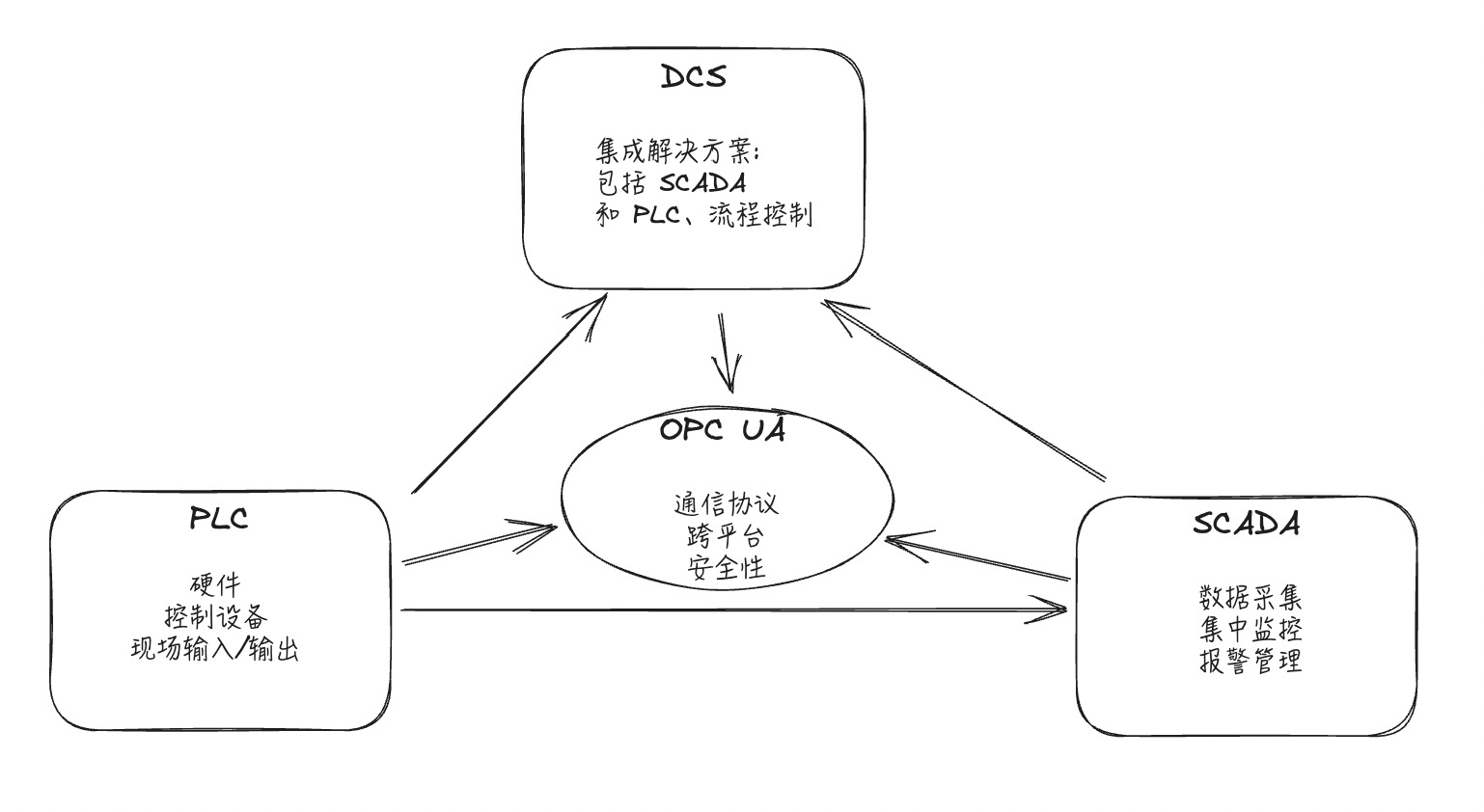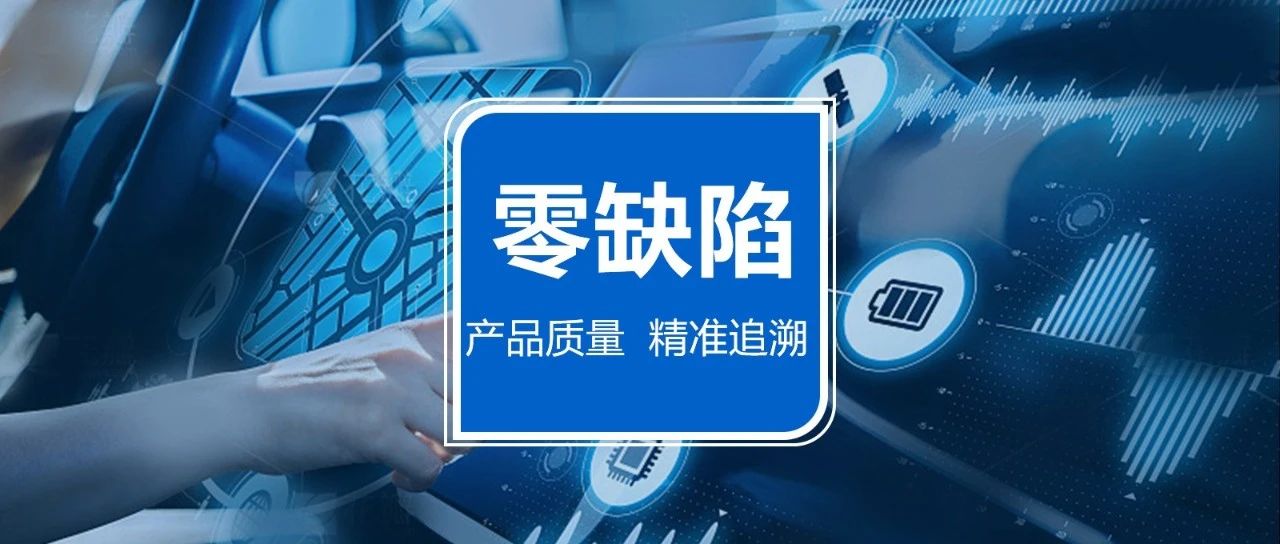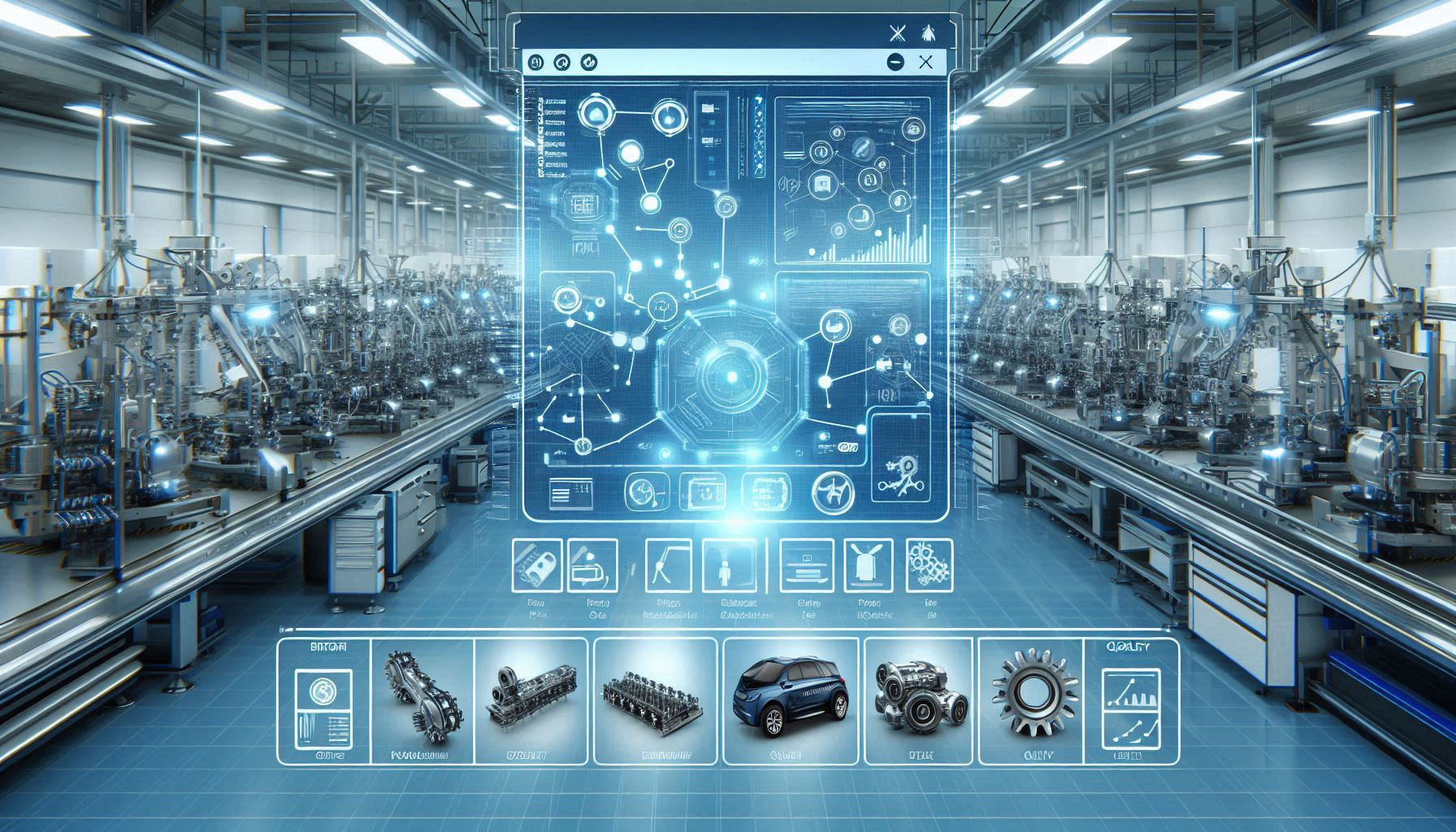In the field of industrial automation, PLC, SCADA, DCS, and OPC UA are commonly used control and communication systems. To help you better understand their functions and distinctions, we will introduce these concepts one by one and explore their roles and interrelationships in industrial control systems.
1. PLC (Programmable Logic Controller)
PLC is the core of on-site device control. It is a small computing device that communicates with field devices through input and output interfaces. A PLC reads sensor input signals and controls output devices such as motors and valves based on a pre-written control program. Due to its high stability and fast response, PLCs are often used in real-time control scenarios, such as in the mechanical control of automated production lines.
Key characteristics of PLCs:
? Hardware Device: Includes input/output modules and processors.
? Highly Customizable: Control programs can be written according to specific production processes.
? Independent Operation: Can run independently or be integrated with other systems (e.g., SCADA).
2. SCADA (Supervisory Control and Data Acquisition)
SCADA is a system software designed for monitoring and controlling multiple field devices, typically used in remote and distributed industrial environments. Its core function is to collect data and centrally control multiple PLCs or other devices through software. Key functions include data monitoring, alarm management, and data storage.
Key characteristics of SCADA:
? Centralized Monitoring: Capable of managing multiple PLC devices remotely.
? Openness: Supports integration with various devices and protocols, allowing communication with different brands of PLCs.
? Data Collection and Analysis: Provides real-time data monitoring and historical data analysis.
3. DCS (Distributed Control System)
DCS systems share some similarities with SCADA but have a different design approach. DCS is usually a complete automation control system that includes hardware devices (such as PLCs and remote I/O modules) and software (such as SCADA components). DCS is specifically designed for complex industrial processes and is widely used in large plants requiring precise control.
Key characteristics of DCS:
? Proprietary Systems: Typically provided by a single vendor as an integrated solution, including hardware and control software.
? Pre-installed Programs: Often comes with pre-set process control programs tailored for specific industries or production lines (e.g., chemical, steel).
? High Integration: Hardware and software are deeply integrated, and field devices communicate through high-speed dedicated buses.
4. OPC UA (Open Platform Communications Unified Architecture)
OPC UA is an industrial communication protocol designed to provide a secure communication standard between industrial automation devices and systems. Unlike the traditional OPC protocol, OPC UA uses more modern technologies, allowing it to work cross-platform and support more complex data exchanges. This makes it a preferred protocol for data transmission in the Industrial Internet of Things (IIoT).
Key characteristics of OPC UA:
? Platform Independence: Supports communication between different operating systems and hardware architectures.
? Strong Security: Built-in security features that provide data encryption and authentication mechanisms.
? High Scalability: Capable of transmitting more complex data types, making it suitable for IoT and smart manufacturing environments.
5. Relationships Between PLC, SCADA, and DCS
? PLC is the Foundation Control Layer: It is the control unit closest to field devices and responsible for executing specific control instructions.
? SCADA is the Monitoring and Management Layer: It communicates with multiple PLC devices to monitor and manage the production process centrally.
? DCS is a Turnkey Solution: DCS combines the functions of PLC and SCADA and provides a customized solution for specific industries or processes, often used in more complex control scenarios.
6. Relationship Between OPC UA and These Systems
OPC UA is a communication protocol that connects PLC, SCADA, and DCS systems, ensuring efficient and secure data exchange between these devices. It not only connects devices from different manufacturers but also adds IoT capabilities to systems, supporting remote monitoring and smart manufacturing. As a result, OPC UA is widely regarded as the core protocol for the future of the Industrial Internet of Things.
7. Conclusion
? PLC is the hardware responsible for on-site device control.
? SCADA is the software system that centrally monitors multiple PLCs, ideal for managing distributed devices remotely.
? DCS is a comprehensive process control solution, including both hardware and software, typically used in complex industrial environments.
? OPC UA is the communication bridge between these systems, ensuring efficient and reliable interoperability between them.

Through the OPC UA protocol, PLC, SCADA, and DCS systems can be seamlessly integrated, bringing greater flexibility, security, and scalability to industrial automation systems. As the Industrial Internet of Things continues to develop, OPC UA will play an increasingly vital role in the future.
Start Now! Improve Order Delivery Efficiency Immediately!
Contact us and explore order delivery efficiency improvement with LinkedData digital transformation experts.
Request a Demo
 0510-8521 1230
0510-8521 1230



